Six woodland escapes to get away from it all
Hidden among sun-dappled woodland and dense foliage are some of the world's most remote, back-to-nature places to stay. Lucy Kehoe escapes the urban jungle in search of the real thing...
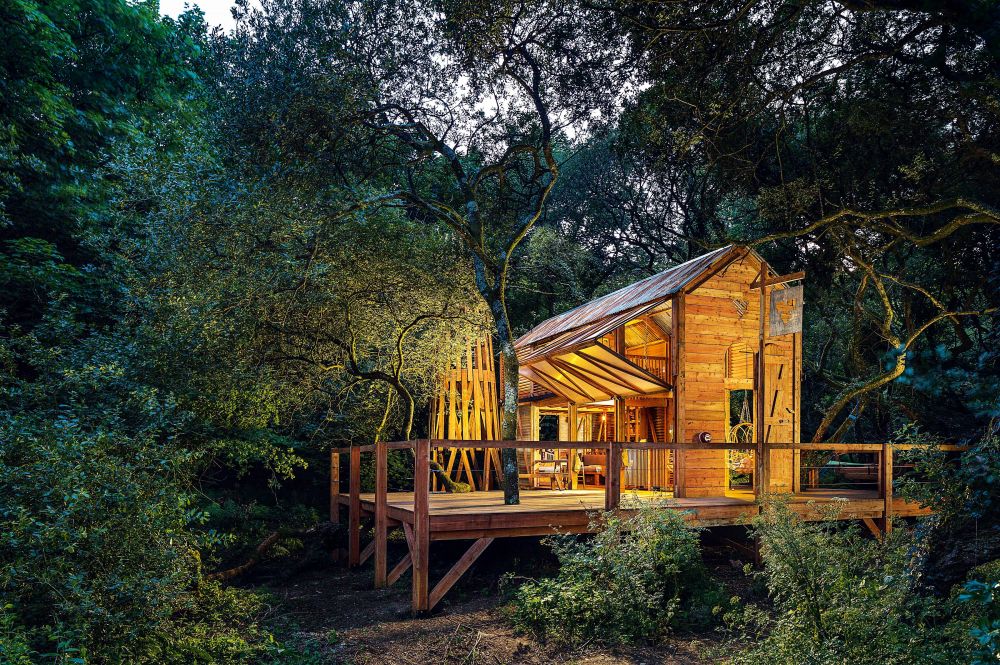
Hidden among sun-dappled woodland and dense foliage are some of the world's most remote, back-to-nature places to stay. Lucy Kehoe escapes the urban jungle in search of the real thing...
Nestled in the web-like aerial roots of a majestic banyan tree, the transparent domes of Mauritius's Bubble Lodge appear at first glance like otherworldly spider eggs.
Hidden away on the tropical paradise of Île aux Cerfs, they crouch below glossy, elliptical leaves and heavy, hanging limbs. This is glamping – but not as you know it.
An 87ha private island that lazes in the waters of the Indian Ocean just east of Mauritius, you can only reach Île aux Cerfs by boat, hopping in a private hire for a ten-minute ride across a turquoise lagoon. The spherical hideout is one of a handful of eco-friendly bubble lodges dotted around the island. Guests have access to a private beach, La Flibuste, and there’s also a chance to brush up on your swing, with complimentary green fees included if you fancy a round on the island’s 18-hole golf course. Dinner can be taken at the club’s restaurant or on the soft-sand beach, soundtracked by the softly murmuring waves.
But it’s when heading inside your transparent igloo that the true beauty of this tropical haven is revealed: a front-row seat to the luminous night show of the southern hemisphere’s constellations, admired from the comfort of a king-size bed inside your own personal bubble.
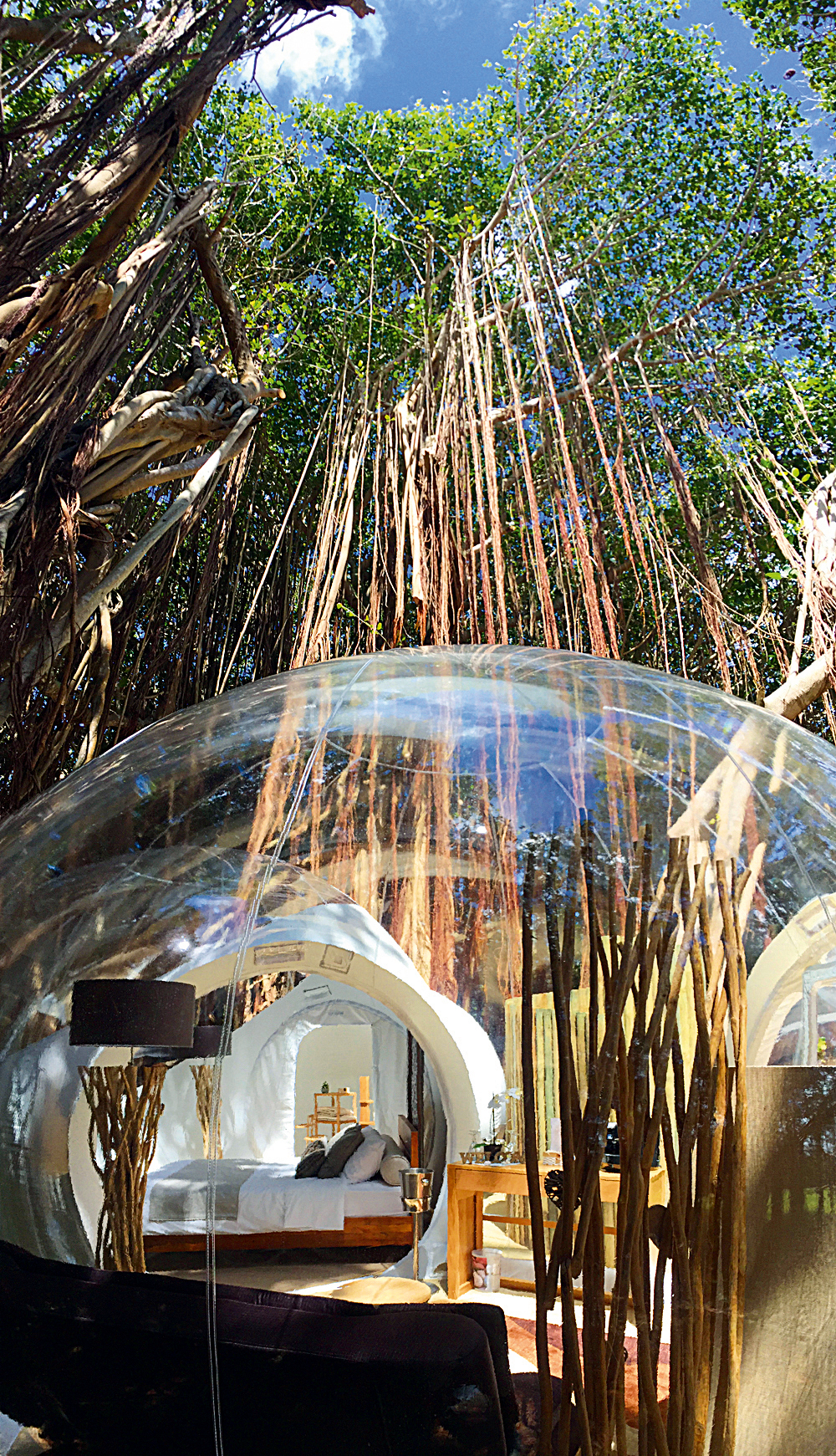
From £375pn (sleeps two adults and up to two children). bubble-lodge.com
With looks better suited to the architectural preferences of Tolkien’s Middle Earth, Chile’s Montaña Mágica Hotel sits a two-hour drive from the nearest airport, hidden within 600sq km of rainforest in the country’s Huilo Huilo Biological Reserve.
Home to yellow-backed Darwin's frogs, solitary pumas and the world’s smallest deer species (standing at a petite 33cm tall), the raucous rumblings of the Los Ríos region’s wildlife fade away as you cross a shuddering ropewalk and enter this fantastical structure nestled in the thick flora. Despite looking like it has sprung from the earth below, the conical walls of the hotel are actually a man-made structure, built from sustainably sourced local wood and stone. Inside, nine wood-clad, cosy bedrooms share their names with the indigenous birds that perch on a rich vine of jungle foliage growing up the hotel's exterior, fed by an artificial waterfall cascading down its walls.
Joining the wildlife on leafy hikes is the main pull for nature lovers, but if you’re looking for creature comforts, the ropewalk connects the hotel to a wider collection of guesthouses and activities, including spa bathtubs made from hollowed-out tree trunks, rafting experiences and horse rides.
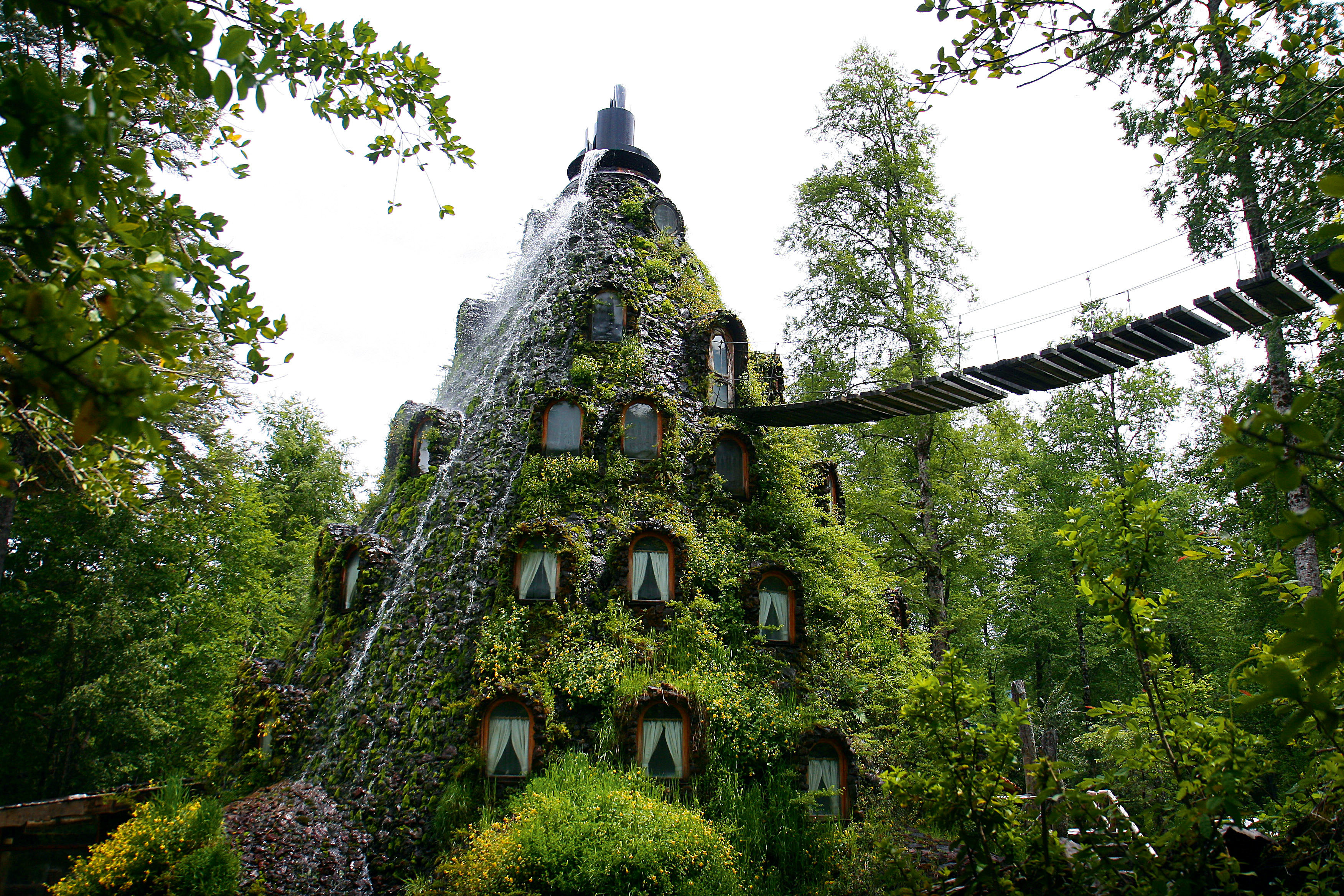
Doubles from £143. huilohuilo.com
Bamboo rustles gently in the breeze in Thailand’s northernmost stretches, amid panoramic views of Myanmar and Laos (which, together with Thailand, form the 'triangle'). It's here you'll find the 15 tented suites of the Four Seasons Golden Triangle in this secluded corner of Southeast Asia.
Arriving at the camp by boat, skimming along the Mekong en route, with your entrance announced by a gong, you're then taken away to your tent and the seclusion of the forest. Here, you can enjoy sundowners on your balcony or head to the leafy open-air spa, where mountain plants and local spices, such as kaffir lime, provide the most natural of therapies under the thick jungle canopy.
This region was once notorious for its opium production, which benefitted from mist-shrouded woodland and hard-to-reach mountain foothills, but now the fertile soils feed an abundance of wildlife. The verdant rolling hills, rice paddies and teak forests are perfect for exploring by bicycle, while organised excursions from the hotel include fish-trapping with local fishermen or taking the wards of the hotel’s Elephant Foundation for a walk to the river, where the graceful giants, rescued from mistreatment, can enjoy a good wallow in the emerald water.
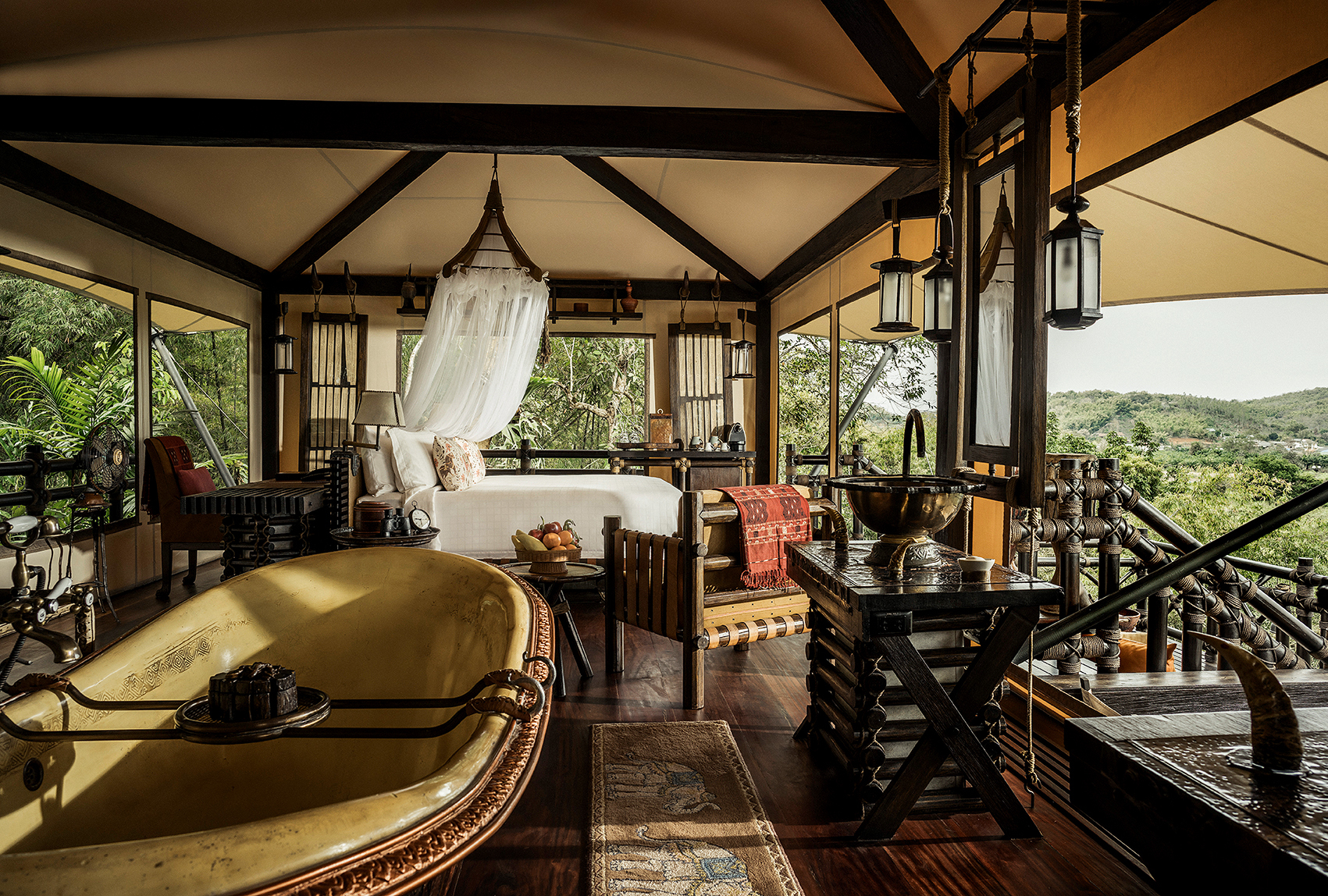
Two-night adventure package for two costs from £2,138, including meals, transfers and activities. fourseasons.com
Wake up as dawn rises for a morning coffee under the boughs on the rooftop terrace of these elegant Danish treehouses and you might hear the soft rustle of hooves treading in the fallen leaves below.
Wild deer in the quiet woodland of the Als Odde peninsula take little heed of the architectural cabins perched 8m above soft forest floors.
These modernist wildlife hides sleep a family of four and are accessed only by sturdy rope pathways ascending into the trees. Inside, late-summer light dapples simple yet stylish interiors. Architect Sigurd Larsen has taken inspiration from the flora outside and used Scandi-blonde wood to panel his hideouts. The outside is very much in – living trees acting as central pillars for each space, loosely dividing the kitchen, living space, bedroom and bathroom, which pinwheel off from the rough-barked trunks.
Supplies can be picked up in the villages that dot the shorelines of Denmark’s longest fjord, Mariager. The cobbled streets of Hobro, Hadsund and Als offer a chance to enjoy a slow-paced exploration of Danish living, but you’ll probably want to spend the majority of your time in the woods, wandering the paths that wind deep into the landscape or trying trout fishing.
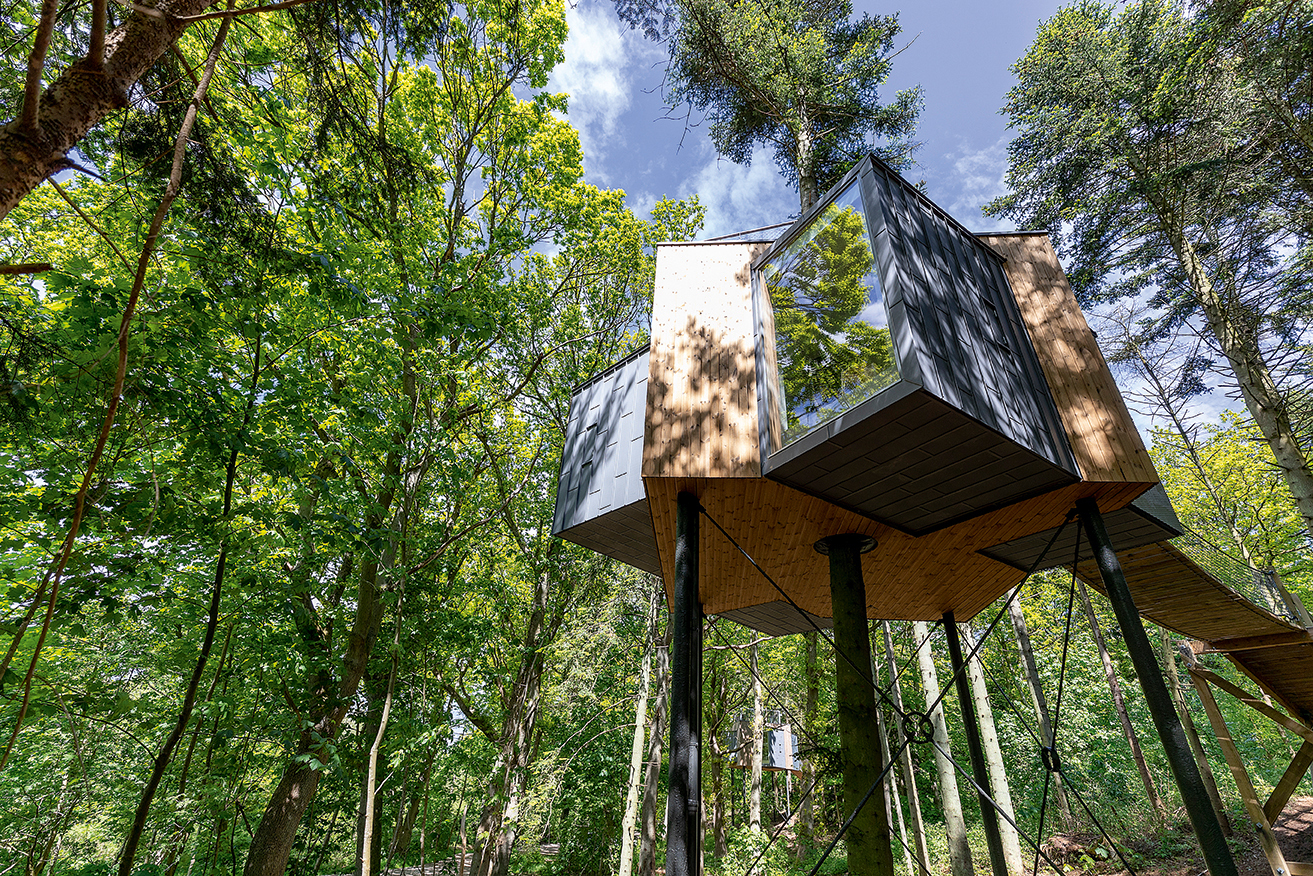
From £282pn (sleeps four). lovtag.dk
The only lodge in Tanzania’s Lake Manyara National Park, this treetop safari camp provides exclusive access to the cross-hatched river landscape of East Africa’s Rift Valley.
The well-watered vegetation provides an abundant home to hippos, giraffes, buffalo and bubblegum-pink flamingos lazing under baobab trees and amid swaying grasses, but you’ll find the park’s most luxurious habitat cradled in the twisting branches of ancient mahogany trees. Here, nine opulent treetop lodges shelter under palm fronds. Artworks by local artists adorn the walls and guests sleep
in gauze-hazed four-poster beds in bedrooms that open out across spacious verandas and provide ringside seats for burnished African sunrises.
Days begin with the chattering of the dawn chorus and a private performance from the myriad wildlife surrounding the treehouse homes.
Delicious breakfasts and dinners are taken in a traditional Maasai boma – an enclosure lined with thorny branches to ensure your alfresco meals aren't interrupted by Lake Manyara's most famous inhabitants – a group of tree-climbing lions. Catch them sleeping branches during game drives and watch the skies, too: you might spot the migrating brigades of flamingo flying above, moving across Tanzania's alkaline lakes which they call home (along with over 400 other species of waterfowl).
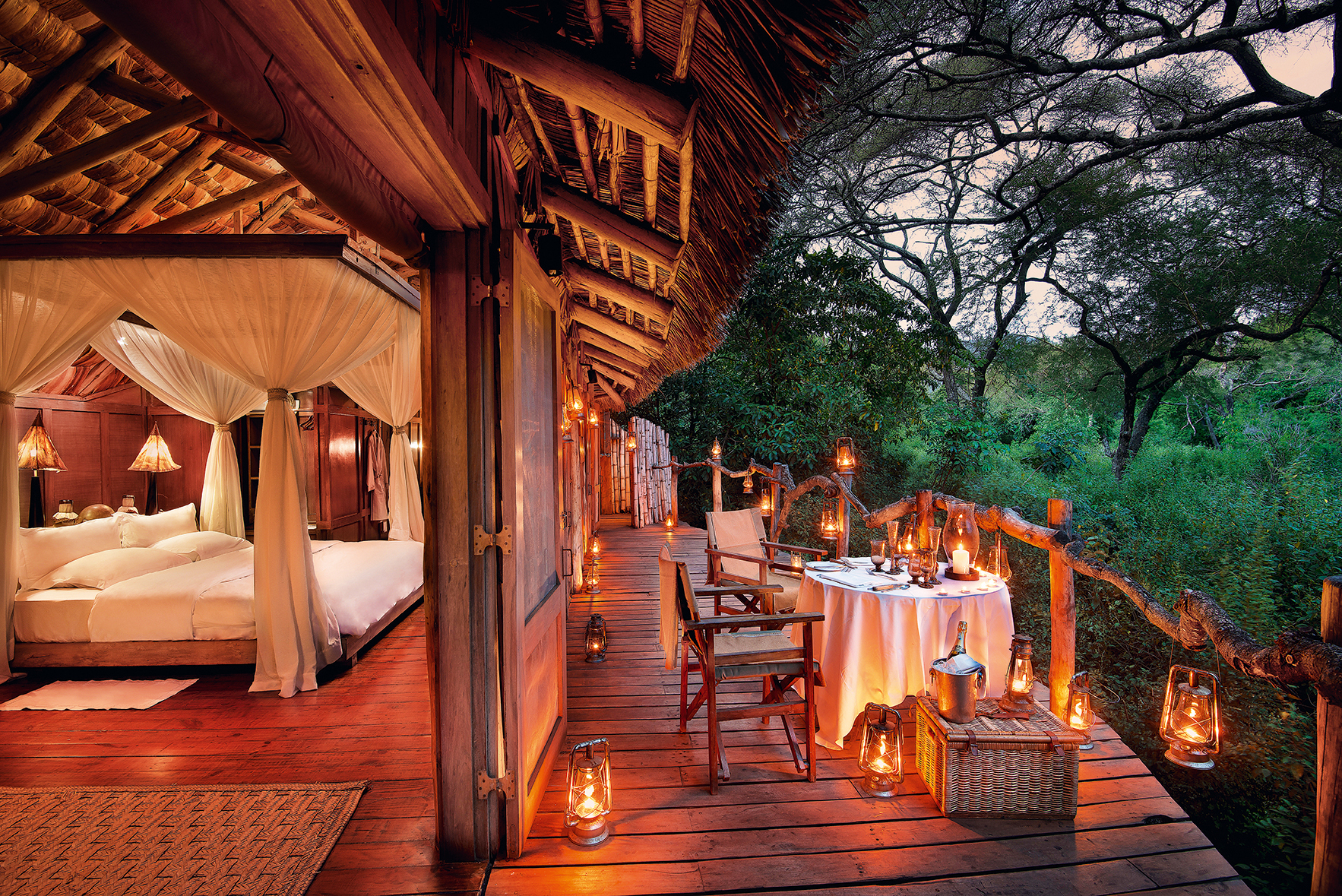
Suites from £665pn (sleeps two); family suites from £2,323pn (sleeps four). andbeyond.com
A land of hidden beaches, smugglers’ coves, wild moorland and ancient woodland, with the finest produce always at hand, both from land and sea, Cornwall is the ideal place to go 'off-grid' and escape modern life.
With Kudhva's collection of remote huts and tree tents on the Celtic county's spectacular northern coast, half the adventure is finding your place to stay, as you roam the dense woods in search of your shelter.
Kudhva, fittingly, means 'hideout' in Cornish. And the company's most secretive escape is its Danish Cabin. Made from galvanised corrugated sheets and timber, it sits on stilts above a burbling stream amid 18ha of abandoned quarry land, 1.6km inland from Trebarwith Strand.
Sleeping up to six on cosy bunk beds, the cabin's beauty is in offering nights spent surrounded by the sounds of nature, thanks to innovative lifting walls which open up and invite in the whispering woods for a truly immersive experience.
Adventure further into the lush landscape and more secrets reveal themselves: a quiet lake complete with waterfall for wild morning swims, the dark depths of an old quarry cave to explore and a number of wooden huts across the site which shelter a guest bar, wood-fired hot tub, fire pit and communal kitchen space. Here, you can cook up your foraged finds and fish from England's finest waters.
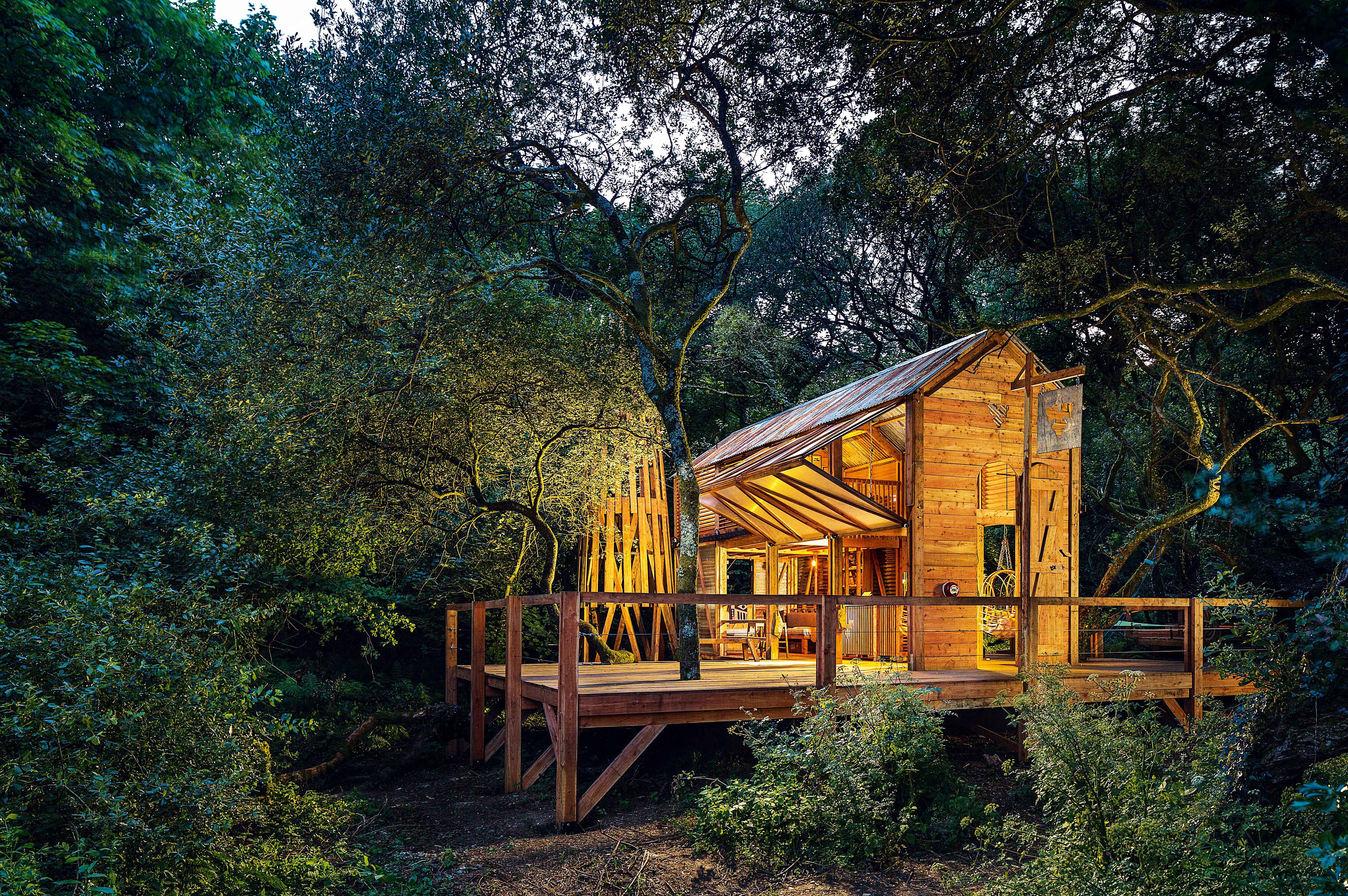
From £235pn (sleeps six). coolstays.com
Subscribe and view full print editions online... Subscribe